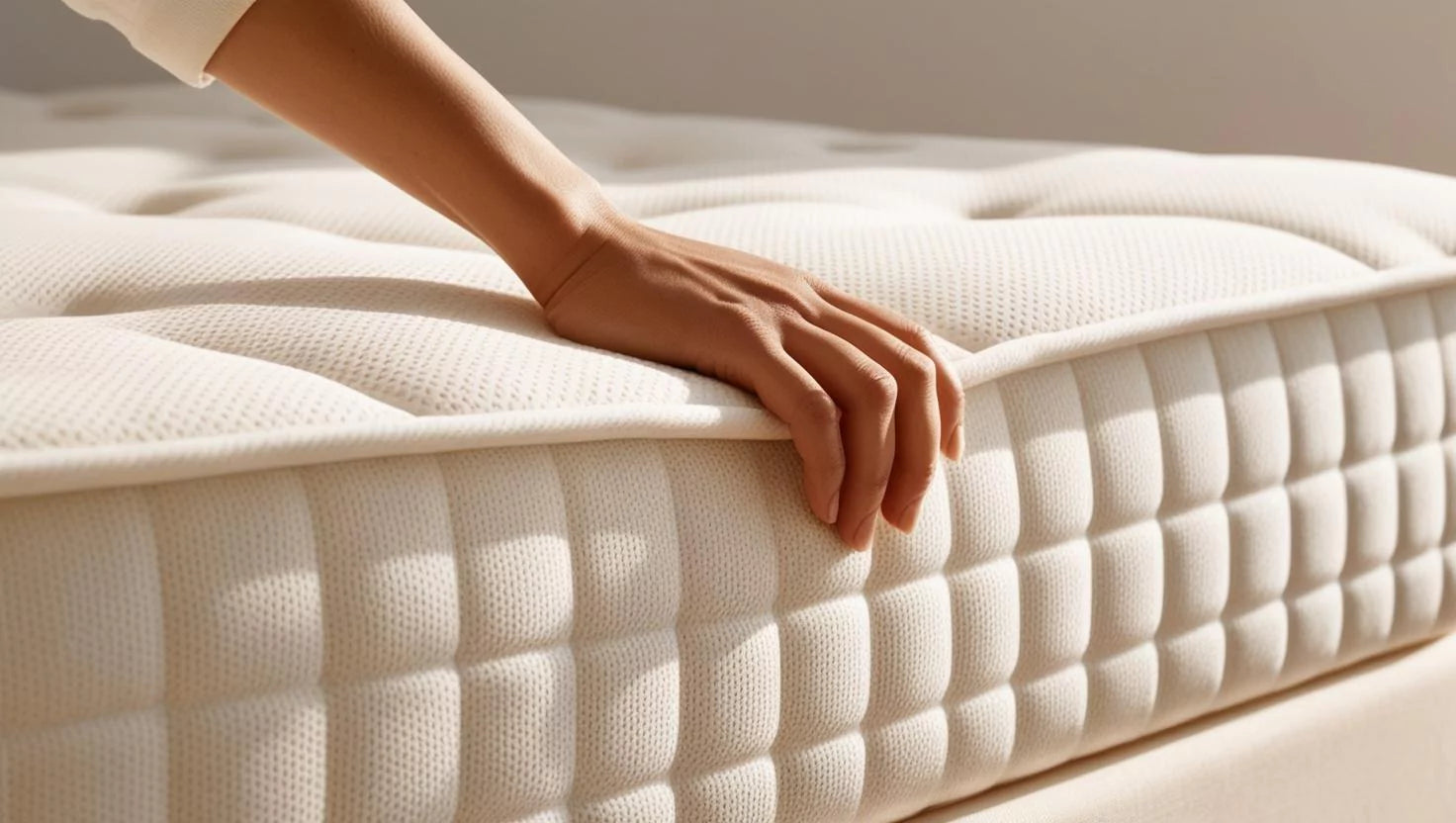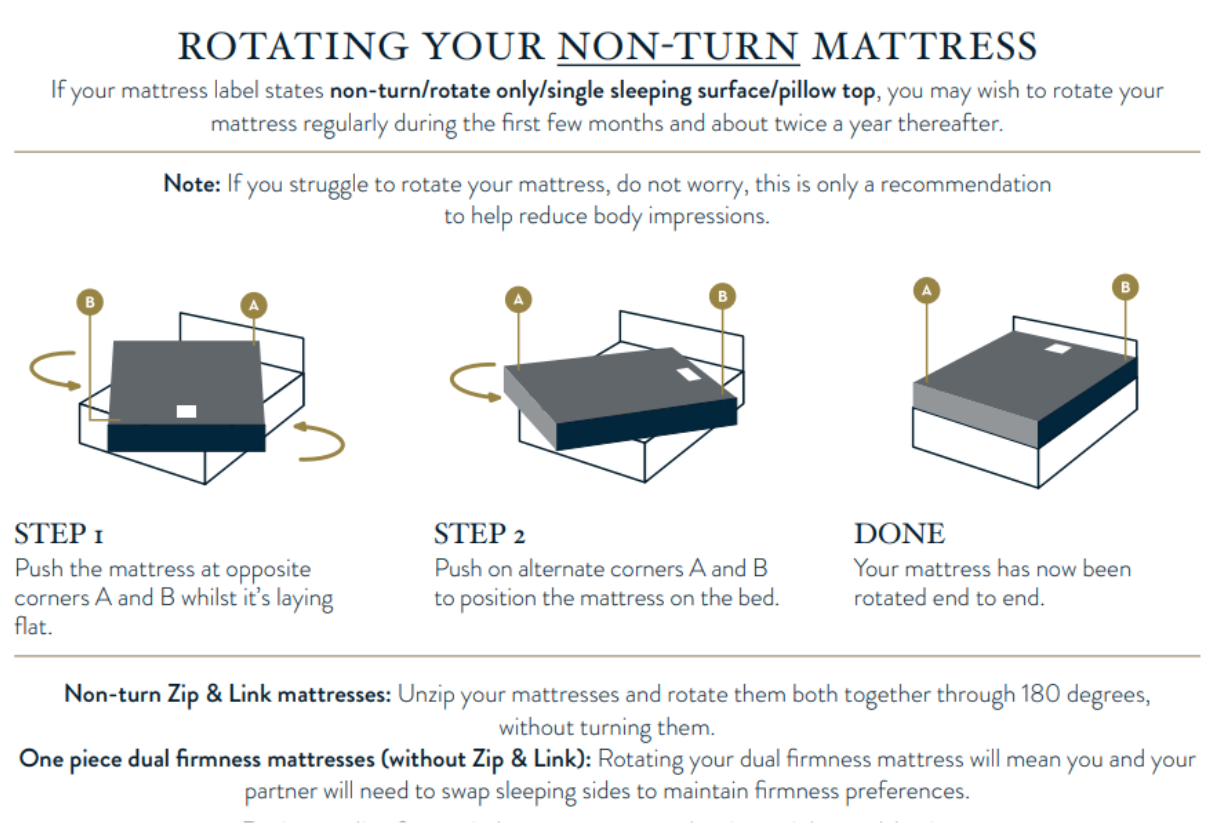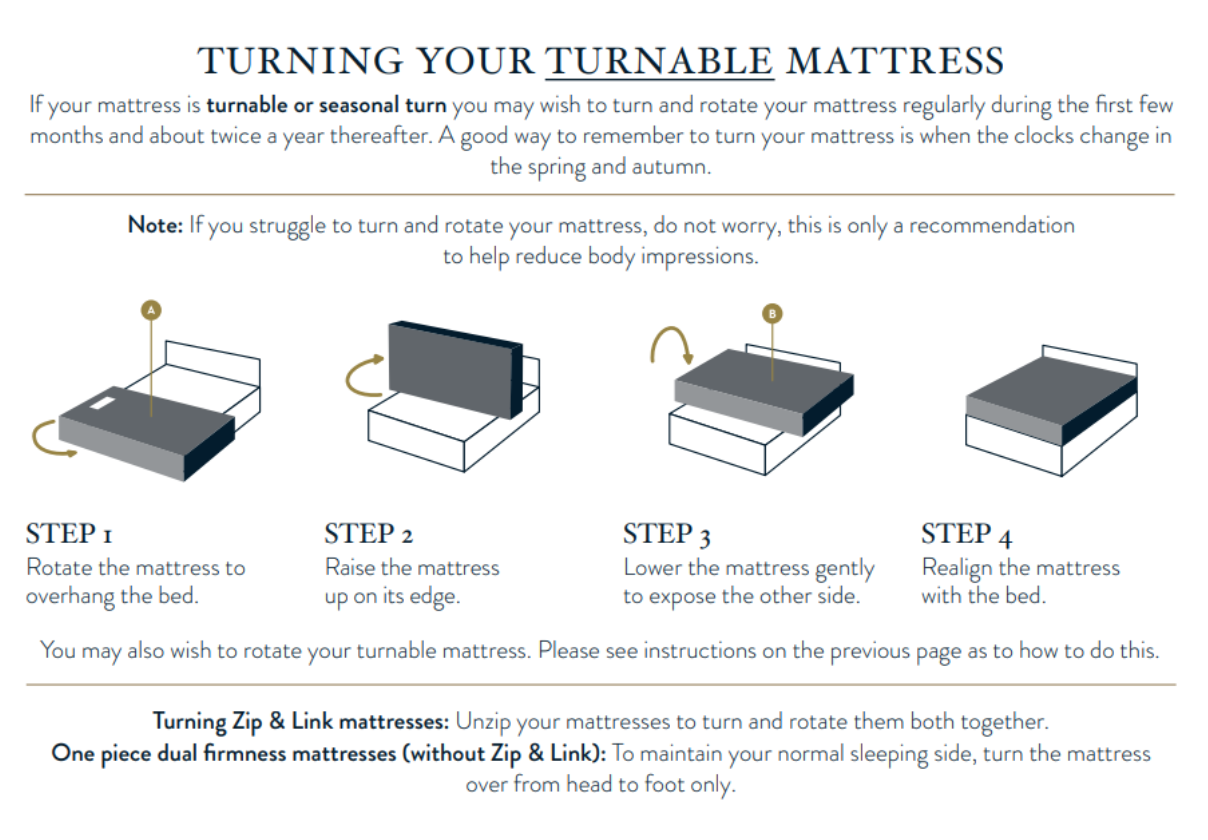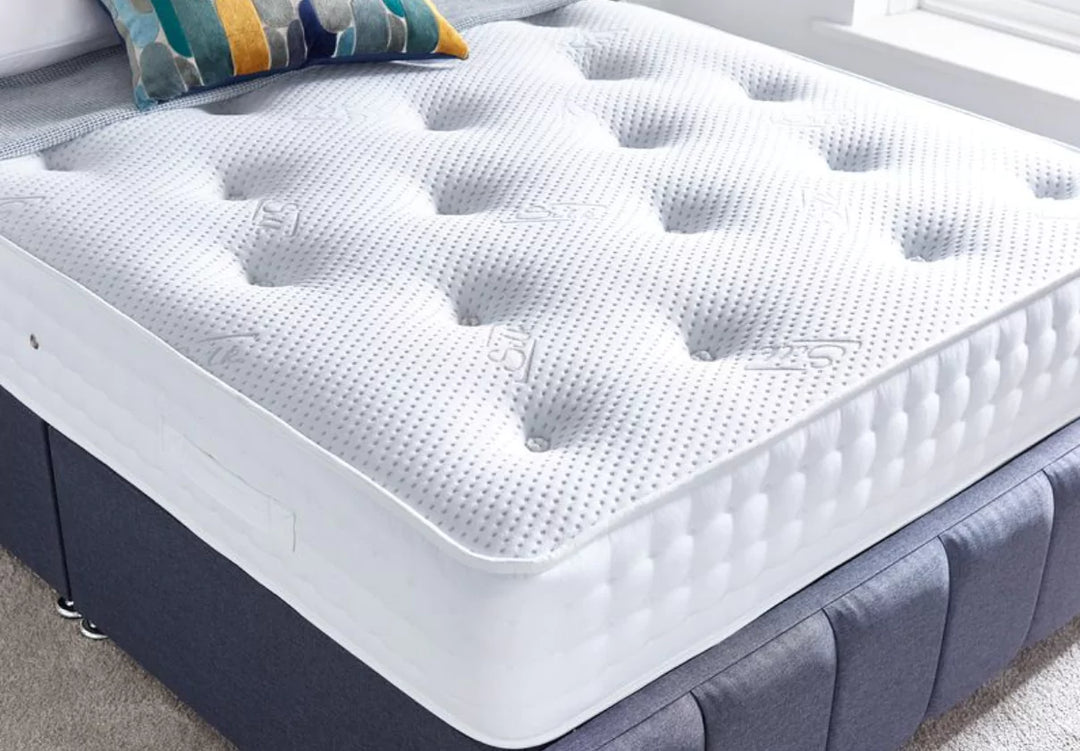
Mattress Care Guide
Everything you nned to know about extending the life of your mattress
Settling in with your new mattress
Once you've purchased your new mattress, it's important to take full advantage of your investment by ensuring it stays in top condition. Regular upkeep not only helps extend the life of your mattress but also plays a crucial role in maintaining comfort and support for a restful night’s sleep. Proper care will help you get the most value out of your new purchase for years to come.
To protect your mattress, it's essential to start with a suitable foundation or bed frame. Ensure that your bed frame provides adequate support and stability for the specific type of mattress you own. Improper support can lead to premature wear and sagging, compromising the mattress's integrity and comfort. Consult the manufacturer's recommendations or seek professional advice to ensure your mattress is properly supported.
FAQS on Maintaining Your Mattress
While it's fine to transport a mattress on its side, it’s important to avoid leaving it in this position for extended periods. Mattresses aren’t designed to rest on their sides long-term, as the sides aren't strong enough to support the mattress's weight. To prevent any potential damage, be sure to lay your mattress flat as soon as possible after delivery.
Regardless of whether it’s pocket spring, memory foam, natural, or synthetic, the internal structure and fillings of any mattress can be compromised if exposed to harsh conditions, like being stored in a garage or garden shed. If you're not planning to use your new mattress right away, consider rescheduling your delivery date to ensure proper storage.
Because your mattress may be heavy, it's recommended that two people handle the lifting. Always take care when moving it to avoid injury or damage. And remember, any handles on the mattress are meant for repositioning it short distances, not for carrying it over long distances.
When your mattress is delivered, it’s important to ensure the room is well-ventilated for a few hours before dressing your mattress and sleeping on it. Mattresses with natural or foam fillings may emit a slight odour, which is completely normal and harmless. To help the odour dissipate, regularly loosen your bedding to allow air circulation, and it should fade within 14 days.
If you've purchased a rolled mattress, be sure to allow up to 48 hours for it to fully unroll and expand to its intended size before use.
It’s common for people to sleep in the same position every night, which can cause body impressions (also known as settlement) to form in your mattress. The comfort fillings naturally settle in the areas where you sleep, sometimes leaving a ridge down the center. This is more noticeable on larger mattresses or those with a pillow top, but rest assured, it doesn't impact the comfort or support of your mattress.
To manage this, regular rotation is key in the first few months to evenly distribute the pressure across the mattress.
While a slight settlement is completely normal, there are a few ways to minimise further compression:
- Pull back the bedding after you get up to let moisture evaporate and give the fillings a chance to rise back up.
- Adhere to the recommended rotating or turning guidelines on your mattress label to help keep the fillings evenly distributed.
It’s recommended to rotate your mattress every 3-6 months to ensure even wear. If the mattress is flippable, you can also flip it, but some mattresses are designed to only be rotated.
The frequency of turning a mattress depends on the type of mattress you have. Here are some general guidelines:
Traditional spring mattresses: It is recommended to turn these mattresses every three to six months. Turning involves flipping the mattress over entirely so that the side that was previously on top is now on the bottom. This helps distribute the wear and compression evenly across the mattress, prolonging its lifespan.
Pillow-top mattresses: These mattresses have an additional layer of padding sewn onto the top. They typically cannot be flipped due to the fixed top layer. However, you can still rotate them by turning the mattress 180 degrees so that the head becomes the foot. This rotation should be done every three to six months.
Memory foam or latex mattresses: These types of mattresses are designed to have a specific orientation and are not meant to be flipped. However, you can rotate them by turning the mattress 180 degrees. It's generally recommended to do this every six months to ensure even wear.
It's worth noting that newer mattress models may have different recommendations from the manufacturer regarding flipping or rotating. Therefore, it's always best to refer to the specific instructions provided by the manufacturer for your mattress. Additionally, some mattresses are designed with specific comfort layers or support systems that eliminate the need for regular flipping or rotation.
Regularly vacuum your mattress to remove dust and allergens. Spot clean stains immediately using a mild detergent, and avoid soaking the mattress. Use a mattress protector to keep it clean and shield it from spills and dirt.
Yes, using a mattress protector is highly recommended as it helps keep your mattress clean and extends its lifespan. Wash the protector every 1-2 months or more often if needed, such as after spills or allergies flare up.
Using a mattress protector offers several benefits and can help protect your mattress investment in the following ways:
Stain and spill protection: A mattress protector acts as a barrier between your body and the mattress, helping to prevent stains and spills from reaching the mattress surface. It can guard against accidents, such as spills, bedwetting, or bodily fluids, and prevent them from seeping into the mattress and causing permanent stains or odours.
Dust mite and allergen resistance: Mattress protectors with hypoallergenic properties can create a barrier against dust mites, bed bugs, pet dander, and other allergens. These protectors can help reduce allergy symptoms and provide a cleaner sleep environment, especially for individuals prone to allergies or asthma.
Waterproof and moisture control: Some mattress protectors come with a waterproof or water-resistant layer that helps guard against liquid spills, sweat, or moisture. This is particularly beneficial for individuals who may experience night sweats or have children or pets who share the bed.
Prolonged mattress lifespan: By shielding the mattress from stains, spills, and other potential damage, a mattress protector helps extend its lifespan. Keeping the mattress clean and free from contaminants can help maintain its structural integrity and overall quality over time.
Hygiene and ease of maintenance: Mattress protectors are typically easy to remove and clean. They can be machine-washed or spot-cleaned, providing an additional layer of hygiene for your sleep environment. This can be particularly useful for individuals with allergies or sensitivities.
It's important to choose a mattress protector that fits properly, is breathable, and suits your specific needs. The protector should not interfere with the comfort or support of your mattress. Additionally, regularly washing and maintaining the mattress protector will help ensure its effectiveness and longevity.
Most mattresses last around 7-10 years, depending on the type and usage. However, if your mattress starts to show signs of wear such as sagging, lumps, or discomfort, it may be time to replace it sooner.
If lumps or indentations develop, try rotating or flipping your mattress if possible. Regularly rotating helps distribute weight more evenly and can prevent further wear. If the issue persists, consider replacing the mattress if it's affecting comfort.
To prevent sagging, rotate the mattress regularly and use a suitable foundation or bed frame that provides adequate support. Avoid sitting on the edge of the mattress for extended periods, as this can cause uneven wear.
Yes, exposure to moisture, heat, or direct sunlight can damage a mattress. Avoid storing or placing your mattress in areas with high humidity, such as basements or near heating vents, as it can affect the foam or fabric.
For mattresses made with natural materials, avoid exposing them to excessive moisture. Use a breathable mattress protector to protect against dust and allergens. Spot clean any stains gently and allow the mattress to air out regularly.
Regularly vacuum your mattress to remove dust and allergens. Allow it to air out by pulling back the bedding when you get up, and use a mattress protector to keep it clean. For persistent odors, sprinkle baking soda, let it sit for a few hours, and then vacuum.
A slight smell from a new mattress is normal, especially with memory foam or latex. It’s usually harmless and fades within a few days to a week. Allow your mattress to air out in a well-ventilated room to speed up this process.
Use a mattress protector to create a barrier against allergens, dust mites, and bed bugs. Regularly clean and vacuum your mattress, and wash bedding frequently. If you suspect a bed bug issue, address it promptly with pest control or treatments.


Proper mattress care is essential for maintaining its comfort, durability, and hygiene over time. By following a few simple practices—such as rotating your mattress regularly, using a protective cover, and ensuring proper ventilation—you can extend its lifespan and ensure you continue to enjoy restful sleep.
Investing in quality care for your mattress not only enhances your sleep experience but also helps protect your investment. With these tips in mind, you can rest easy knowing your mattress is well-maintained and ready to support you for many years to come.





